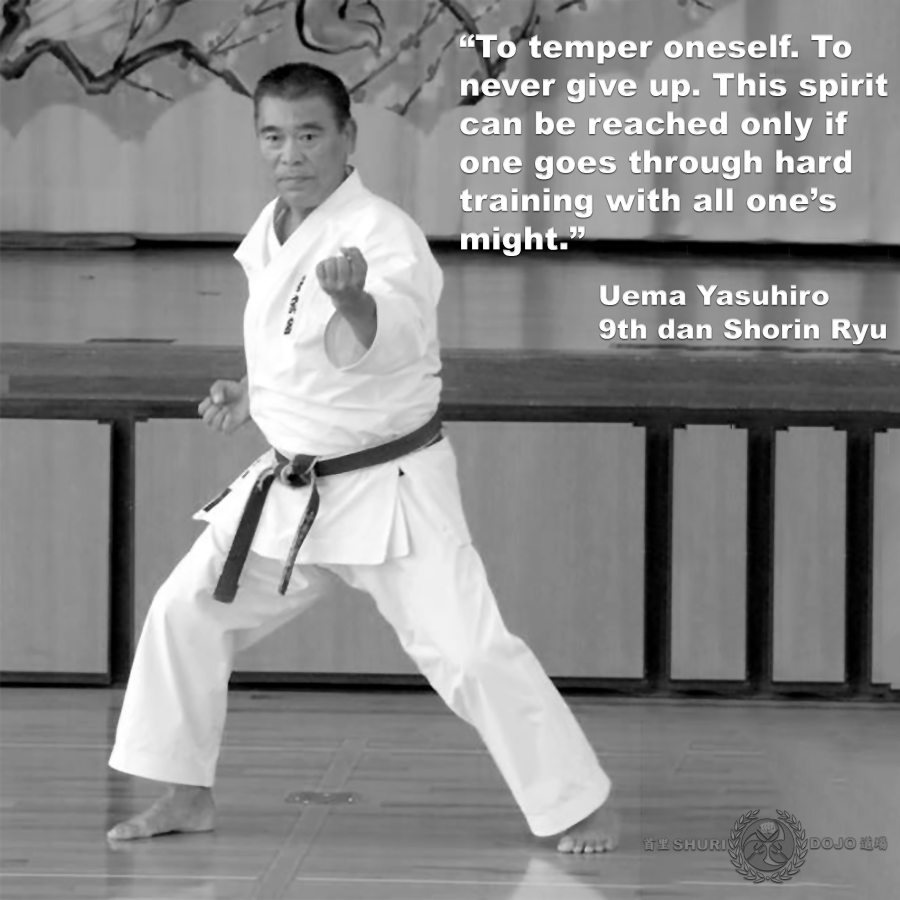
自分を鍛える. (Jibun o kitaeru) “To temper oneself. To never give up. This spirit can be reached only if one goes through hard training with all one’s might.” (End quote) – Uema Yasuhiro 9th dan Shorin Ryu
.
If you train, and train hard, you will achieve so much, and that is a fact. If you embrace the essence of what the Shuri Dojo has to offer, not just the training but the family ethos, your progress will have no boundaries and it will be forever part of you.
.
“Kenzoku” (眷族) is a Japanese word that when translated means family. But its definition suggests a deeper meaning; that it is a bond between people dedicated to sharing the same story. In other words, this implies that Kenzoku is the deepest connection of friendship. It’s camaraderie. The family that you choose for yourself.
.
The feeling of Kenzoku is part of the spirit of our Dojo, our belief that members are a part of a family is at the heart of our ideals. We feel that it is important that members feel part of our Dojo, and part of a karate family, and not just a name on a membership list.
.
Students come and go and those who have embraced it, never truly leave, because it becomes a part of them.
.
The secret is to allow yourself not only to feed off the energy but to also contribute to it.
.
Hanging on a wall in our Dojo is the symbol for “Ensō” (円相), which translates to “circle”, and is a concept strongly associated with Zen Buddhism. Ensō symbolizes many other things, including: creativity, strength, weakness, perfection and imperfection, amongst many other things. It can also represent your spiritual journey and can either be a closed circle or open ended, to represent your state of progress.
.
The Ensō also represents to us the strong bonds that keep us together. The strength of our Dojo depends on the ability of each of us to listen to our hearts, and to relate to others through it.
.
The circle too can also represent the essence of strategy and movement in karate. The infinite points on a circle have unlimited positions, or angles we can move to, and counter from, in meeting an opponent. This circular movement that takes us out of a line of attack and into a position of strength from which we can counter-attack, is the basic movement found in virtually all kata.
.
“What the teacher [or dojo] is, is more important than what he teaches.” – Quote from Karl Menninger (1893-1990)… [edited] ![]()
![]()
.
![]() Photo Credit: Shubukan
Photo Credit: Shubukan
.
